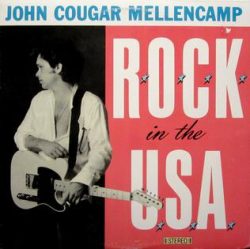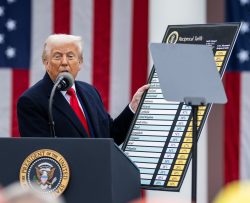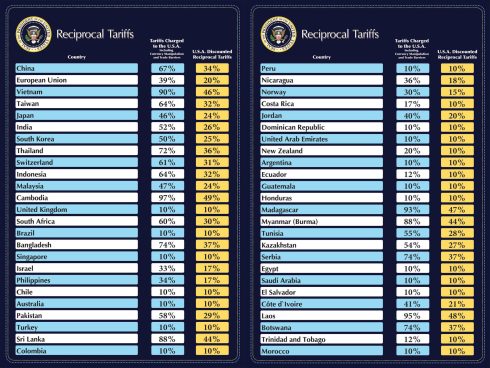Posted By RichC on April 6, 2025
Once again the request was out from TheHustings.news for a bit of a pro-tariffs and pro-Trump right-column commentary than others could muster (text below before the editor puts his pen to it).

Truth be told, I struggled after the hammering investors took last week (including me). I had to work a little harder to stay positive. That aside, I know the path we have been on when it comes to debt spending, fiscal problems for Medicaid, Medicare and Social Security … and the loss of our industrial base … and that it is not sustainable for our country. Every American  who is a rational thinker knows that deep down outsourcing not only the lowest paying jobs, but also our steelmaking and heavy industry for decades hurts the U.S. These good jobs traditionally have been blue-collar careers and helped us win world wars, build a strong middle class and made families self-reliant through work, not through government welfare. Many in the heartland have nearly lost hope — therefore tariffs, as much as free/fair trade conservative Republicans hate them, might just bring back jobs and rekindle America’s working middle class. I’m hopeful it works … and before the mid-term elections!
who is a rational thinker knows that deep down outsourcing not only the lowest paying jobs, but also our steelmaking and heavy industry for decades hurts the U.S. These good jobs traditionally have been blue-collar careers and helped us win world wars, build a strong middle class and made families self-reliant through work, not through government welfare. Many in the heartland have nearly lost hope — therefore tariffs, as much as free/fair trade conservative Republicans hate them, might just bring back jobs and rekindle America’s working middle class. I’m hopeful it works … and before the mid-term elections!
Trump’s Tariffs: A Catalyst for America’s Manufacturing Revival
President Donald Trump’s tariff policies have sparked heated debate, but their potential to rebuild America’s manufacturing industry and drive an economic rebound deserves a closer look. By imposing tariffs on imported goods, particularly from nations like China, Trump aimed to level the playing field for American workers and businesses. The results? A resurgence of domestic production, increased business investment, and a renewed sense of economic optimism.
Tariffs are encouraging companies to bring manufacturing back to U.S. soil. For decades, cheap overseas labor and lax regulations lured corporations abroad, hollowing out America’s industrial base and capacity for our military to fight an extended war.. Trump’s tariffs flipped the script, making it costlier to import goods and incentivizing firms to reinvest in the United States. Take the steel industry, for example: after tariffs were slapped on foreign steel, domestic producers saw a boom, with companies like Nucor and U.S. Steel ramping up production and hiring American workers. This isn’t just about one sector — heavy equipment, automotive, textiles, electronics, and machinery are seeing similar shifts as businesses rethink their supply chains.
Business investment has surged as companies redirect capital to the U.S., spurred by tariff policies and a pro-growth agenda. Factories are expanding and even reopening, breathing life into communities long left behind. The National Association of Manufacturers reported record optimism among its members during Trump’s tenure, with capital spending hitting levels not seen in years. This isn’t just blind faith — lower corporate taxes and deregulation, paired with tariffs, have made the U.S. a magnet for investment once again.
Critics argue tariffs raise costs for consumers, and that’s not entirely wrong—prices for some goods are ticking up. On the other hand, some of us are old enough to remember when computers and televisions costs way more than they do today and costs the American family significantly more of their household incomes — and we survived. The trade-off is worth it: a stronger, self-reliant economy. The short-term pinch pales in comparison to the long-term gains of revitalized industries and millions of high-paying jobs. Plus, as manufacturing scales up domestically, competition will drive efficiency and innovation, softening those cost increases over time.
Trump’s tariffs aren’t just about economics—they’re about national pride. Bringing back “Made in America” isn’t a slogan; it’s a strategy to reclaim our industrial might and secure our future. The rebound is real: businesses are betting on the U.S. again, and that’s a win for every American worker.
Edit Add: Here’s the LINK to the published commentary after going live.
Category: Blogs, Financial, News, Politics |
0 Comments
Tags: america, commentary, fiscal, jobs, manufacturing, medicaid, medicare, middle class, social security, tariff, tariffs, thehustings, trump








